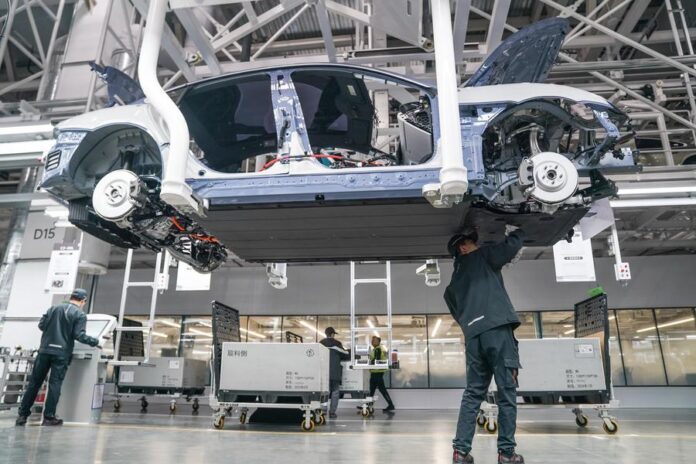By Dr Mehmood Ul Hassan Khan
The Chinese economy is diversified and resilient. China’s commitment to high-quality growth is reinforcing the positive momentum of China’s economy and its ability to maintain a solid sovereign credit standing due to which its GDP target of 2024 is achievable.
Moreover, Xi’s new productive drivers of the Chinese economy would be new value addition to achieve all desired goals of modernization, digitalization, green transformation, EVs, lithium batteries and Artificial Intelligence Technologies.
According to latest statement of the president of the ADB (2024), the Chinese economy is still leading in Asia and around the world which defies the current publication of the Fitch rating. Most recently, the US rating agency Fitch has intentionally downgraded China’s sovereign credit rating outlook to negative from stable which faced strong rejection from Chinese policy makers.
China has a large and diversified economy, which is still stable, sustainable and solid GDP growth prospects relative to having integral role in global goods trade, robust external finances, and reserve currency status of the yuan.
Some western forces, regulatory bodies, credit rating agencies and media outlets have been hyping “China’s Peak Theory” using different rhetorical approaches despite their past false and fake propaganda being proved wrong. According to the latest data (2024), its GDP has a strong start of 7 percent. Industrial growth is 7 percent year-on-year, fixed asset investment up by 4.2 percent 5.08 trillion yuan on year-on year.
Furthermore, 18 Chinese provinces and cities registered real growth greater or equal to national GDP and 26 cities each with GDP of more than 1 trillion yuan vividly reflects diversification, innovation, digitalization and resilience of the Chinese macro-economy negating all sponsored reports of the west about its so-called collapse or slowdown which may be an adjustment policy. China’s contribution to global GDP 30 percent remained an important growth engine for the world.
The latest published reports of the Chinese economy vividly reflects its long term foreign exchange reserves standing at $3.2457 trillion, the world’s largest which means that China can ensure the stability of its currency.
Chinese policy makers termed it biased and flawed which ignored basic parameters of judging the real strength and diversification of the Chinese macro-economy, which has further strengthened during first quarter of the 2024 in terms of manufacturing capacity, exports, seeking foreign direct investment, innovation, domestic consumption trends and stable financial & banking sectors. Therefore the Chinese government has the ability and determination to maintain sound sovereign credit.
Prominent regional experts and the Chinese economists also lambasted the ratings agency’s latest report which has serious methodological flaws only relying on negative headlines from Western media and failed to assess growing positive factors within the Chinese economy.
China’s Ministry of Finance (MOF) and Foreign Ministry regretted Fitch downgrading China’s sovereign credit rating outlook. Frankly speaking, the indicator system of Fitch’s sovereign credit rating methodology fails to show the positive role of China’s fiscal policy in promoting economic growth and stabilizing the macro-leverage ratio.
Critical analysis confirms that China’s long term fiscal policy is perfectly managing moderate fiscal deficit and making good use of treasurable debt funds helping expansion in domestic demand, supporting economic growth, and ultimately assisting maintain good sovereign credit.
Mao Ning, a spokesperson for the Chinese Foreign Ministry rightly maintained that the long-term positive momentum of the Chinese economy has not changed reconfirming the Chinese government’s ability and determination to maintain sound sovereign credit equations clearly demonstrated deep-rooted strength of its fiscal and monetary policies gearing the different sectors of macro-economy economy towards greater productivity, progress and prosperity.
Unfortunately, Fitch only trusted on some short-term vacillations in areas such as local debt and the property sector, instead of the full picture of China’s economic transition, which is undertaken by Chinese policy makers to shift from the previous model of relying on land sales to a new model of development. It seems that unrealistically, rely on small issues and using Western models to review China’s development are signs of the lack of understanding China.
It clearly upholds that Fitch’s methodology is flawed, as it’s clearly biased toward negative factors, while ignoring numerous reliable variables in China’s economic resilience and future prospects thus commits a professional and intellectual dishonesty.
The author is Executive Director of the Center for South & International Studies (CSAIS) Islamabad.























